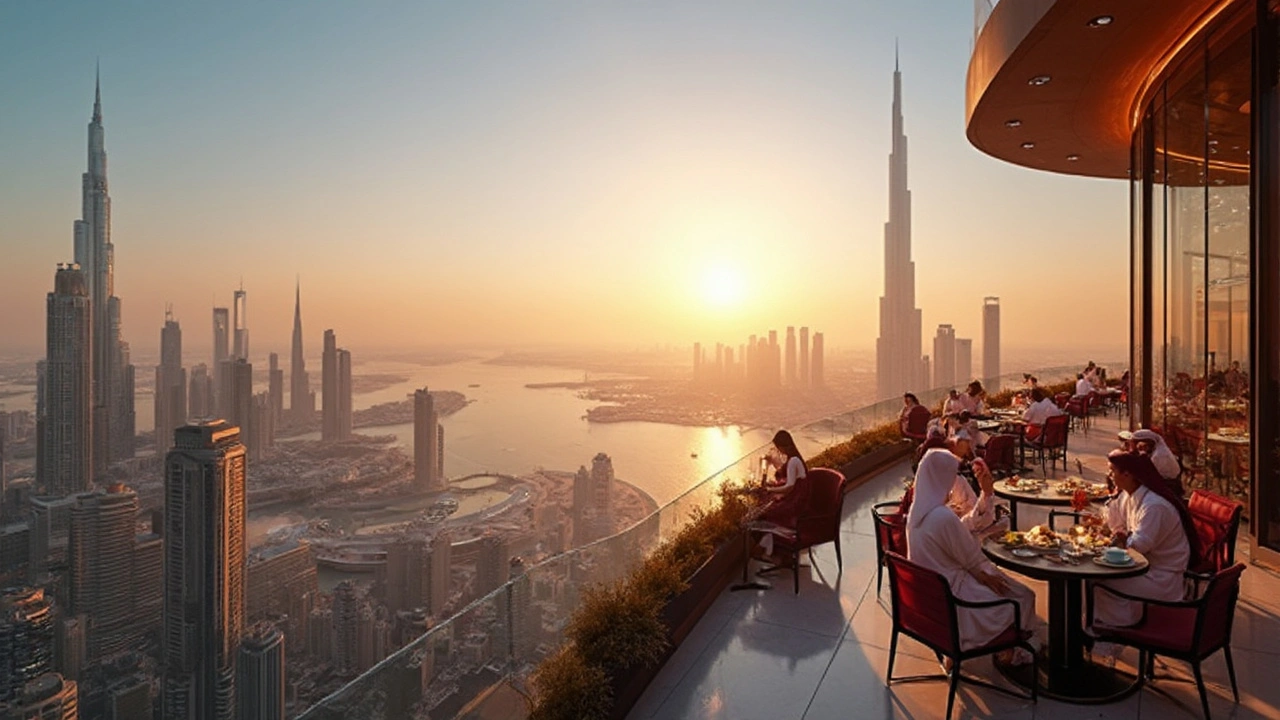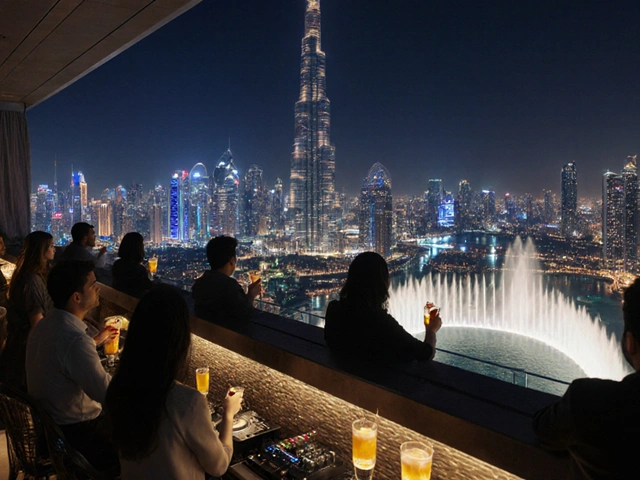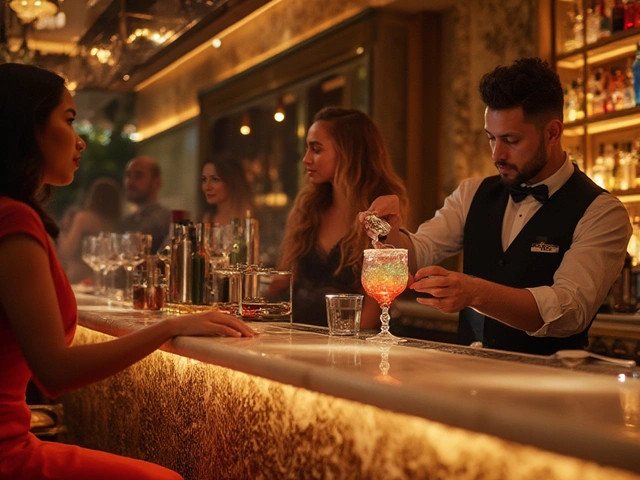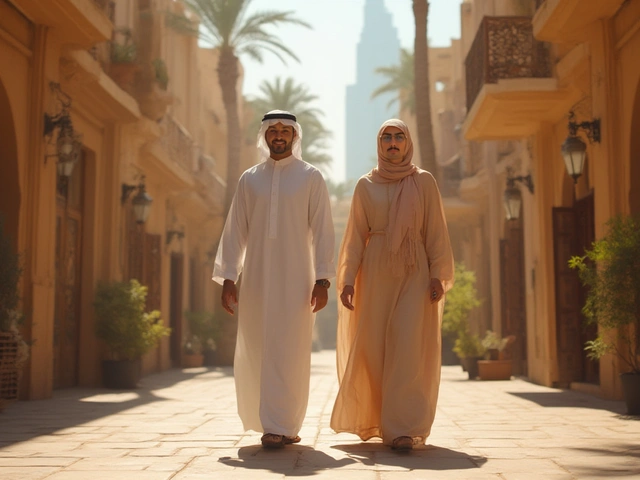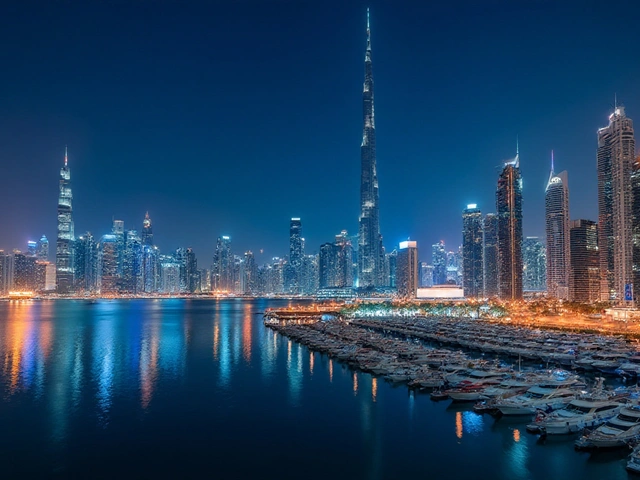Dubai attractions blend skyscrapers, malls, and traditional souks right alongside stretches of empty desert and turquoise Gulf. There's no city quite like this, where you might go from haggling at the Deira Gold Souk to riding an abra across the Creek or sandboarding near Al Marmoom—all in one day. The sheer number of things to do in Dubai can be overwhelming, so it pays to know where to start and what’s actually worth your time.
For anyone living in Dubai or just sticking around for a short visit, the practical stuff matters. Want to beat the tourist crowds up the Burj Khalifa? Book that ticket for a weekday morning. Looking to chill at Jumeirah Beach with fewer people? Head there at sunrise—it’s when locals go for jogs and the water’s calm. If you’ve got family, The Green Planet is a safe bet year-round (the indoor rainforest is a lifesaver when the summer hits).
Don’t ignore the desert. A lot of longtime Dubai folks swear by evening camel rides near Al Marmoom, where it’s surprisingly quiet and feels miles away from Sheikh Zayed Road. The city’s got a good eye for comfort, so most desert safari operators include AC vehicles, chargers, and dinner under the stars—check for those extras, it’ll make the difference.
- Iconic Landmarks: What Dubai Gets Right
- Desert Adventures Beyond the City Limits
- Life by the Water: Beaches and Waterfronts
- Cultural Corners: Old Dubai’s Heartbeat
- Hidden Gems and Local Favorites
Iconic Landmarks: What Dubai Gets Right
You can’t talk about Dubai attractions and forget the Burj Khalifa. It’s the world’s tallest building, standing at a crazy 828 meters. If you want the killer view, the "At The Top" ticket gets you to the 124th and 125th floors. For a quieter scene, pay a bit extra for level 148, which usually isn't crowded. Sunset slots go fast, so book a few days ahead. Pro tip—grab a coffee at the ground floor café and watch people try to selfie the whole tower at once (they never fit it in).
The Dubai Mall sits right at the foot of Burj Khalifa. It’s not just a shopping spot; you’ve got a full-on aquarium (33,000 animals, including giant rays and an insane King Croc), a full ice rink, and restaurants for any budget. If you’re here around 6:00 PM or later, check out the Dubai Fountain show every half-hour. Get there ten minutes before for a front-row spot. Here’s a quick table so you can compare some main spots right in Downtown:
| Landmark | Entry Cost | Best Time to Visit |
|---|---|---|
| Burj Khalifa (At The Top) | AED 169-399 | Morning or Sunset |
| The Dubai Mall | Free Entry | Noon (for best AC!) |
| Dubai Fountain | Free | After sunset |
If you’re more into the old-meets-new vibe, the Museum of the Future is hard to beat. It opened in 2022 and it’s already a favorite with locals, who like bringing family and out-of-towners. The building looks like a silvery ring and is packed with interactive displays on AI, space, and renewable energy. Book your tickets online because it regularly sells out, especially on weekends.
Palm Jumeirah stands out from the sky and the ground. The monorail ride has some of the city’s best coastal views, and you can hop off at Atlantis for waterslides or Nobu for sushi. If you’re driving, free parking gets snapped up fast; the Golden Mile Galleria spots usually have space, though.
If you want to experience Dubai beyond the shiny towers, go to the Gold Souk in Deira. It’s loud, packed, and you’ll see more gold than anywhere else—just ask any resident where they shop for real deals. For the best price, don’t take the first offer; negotiations are a must here.
- If you only do one Dubai attractions stop, pick Burj Khalifa for the view and the story.
- Breeze through the Dubai Mall on a weekday to avoid school groups and tourists. Fridays are nuts.
- For a taste of Dubai history, wander around Al Fahidi Historical Neighborhood. The museums stay cool inside and it’s all walkable.
Desert Adventures Beyond the City Limits
It’s wild how quick you can swap Dubai’s city buzz for total silence—just a 30-minute drive and you’re in open desert, with sand stretching farther than you’d expect. Most people have heard of the classic 4x4 dune bash, but there’s a lot more than selfies in the sand out here. The trick is knowing what to try and when.
Morning is primetime for adventure sports. From October to April, sunrise hot air balloon rides are popular for a reason. Gliding over the dunes and spotting oryx and gazelles is a totally different take on Dubai attractions. Operators like Balloon Adventures Dubai offer early pickups, and flights usually wrap up with breakfast in the desert. If you want peace and cooler temps, book it outside school holidays.
Camel trekking is still a local favorite. Al Marmoom Desert Conservation Reserve is one of the best spots for camel rides at sunset, and the guides know to avoid the busiest routes. Not many places let you see flamingos in the wild right after a trek, but here, you can. Falconry shows often happen in the reserve too—kids eat it up.
| Popular Desert Activities | Recommended Time | Avg. Price (AED) |
|---|---|---|
| Dune Bashing (4x4) | Afternoon/Evening | 150-250 |
| Camel Trekking | Sunset | 100-180 |
| Hot Air Balloon Ride | Sunrise | 1,100-1,450 |
| Sandboarding | Morning/Afternoon | Free-80 |
| Falconry Experience | Early Morning | 350-600 |
If adrenaline is your thing, sandboarding down steep dunes at Big Red (locally called Al Hamar) is a must. Rentals are straightforward, but bring water—no shade here and it heats up fast. You’ll find trucks selling snacks nearby, but skip them if you prefer your stomach intact for the ride home.
Staying overnight? There are desert glamping spots like Sonara Camp and Al Maha, where you get AC tents, local food, and stargazing. These places fill up during winter weekends fast—book ahead. And if you love numbers: Sonara’s occupancy rate hit nearly 80% last November, thanks to cooler evenings and weekend getaways.
“The Dubai desert isn’t just a tourist activity—it’s where the soul of the UAE comes alive, where people slow down and connect with each other and nature,” said Khalifa Al Mazrouei, head of community events at Dubai Municipality.
One more tip: pack light, wear closed shoes, and leave the big bag at home. Phone signal fades out east, so download maps if you’re driving yourself. Local rules mean modest clothing is still expected in group desert camps—shorts and sleeveless shirts might get you odd looks. If you’re booking a tour, always double-check what’s included so you’re not surprised by extra charges out in the dunes.
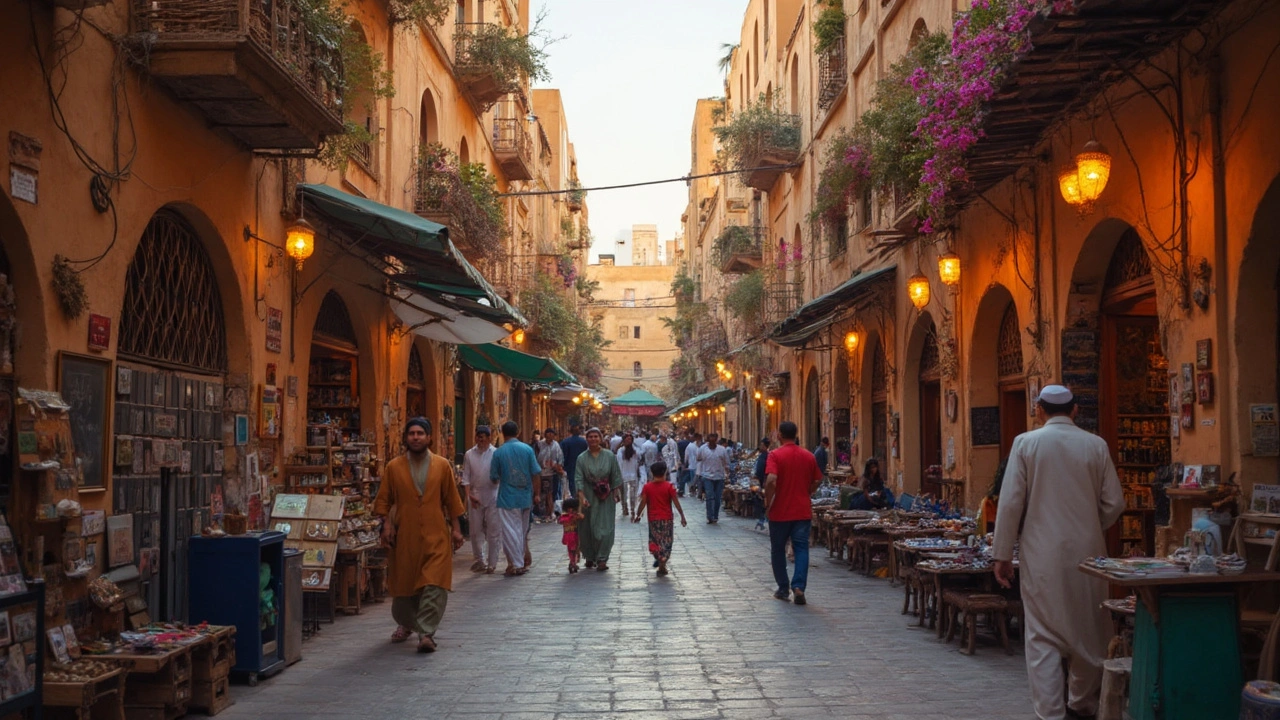
Life by the Water: Beaches and Waterfronts
Dubai’s coastline is one of its main draws—ask any expat, and they’ll tell you how much time they spend at the beach, especially when winter hits. Dubai attractions often mean sandy feet and salty air. Whether you want pure relaxation, spots to swim, family activities, or trendy restaurants, there’s a stretch of sand for you.
Jumeirah Beach is a favorite because it’s public, clean, and the water is usually gentle. Weekday mornings are best for peace and quiet. Kite Beach, true to its name, is big among water sports enthusiasts and families alike—there’s a running track, food trucks (Salt Burger and Kaakunada are popular), and even a skate park. Be aware of the dress code mix, though—Dubai is relaxed about swimwear, but cover up when you’re done in the water.
For a more private experience, try resort beaches like the ones at Jumeirah Al Naseem or Atlantis The Palm. You’ll pay a day pass fee, but you get sunbeds, towels, and fancy showers. Residents sometimes score discounts, so always ask before paying full price.
Away from the sand, Dubai Marina Walk is packed with dining, cycling, and paddleboarding options. Bluewaters Island (home to Ain Dubai, world’s largest observation wheel) is a newer hotspot, and the boardwalk view at sunset beats most skyscraper bars. For families, La Mer is good for a laidback day—kids splash pads, shaded seating, and lots of wallet-friendly cafes.
| Spot | Key Feature | Entry (AED) |
|---|---|---|
| Jumeirah Beach | Public access, swimming, running track | Free |
| Kite Beach | Water sports, food trucks, skate park | Free |
| Atlantis The Palm Beach | Private, luxury, waterpark access | Approx. 295 (Day Pass) |
| La Mer | Family-friendly, cafes, play areas | Free/Public |
| Bluewaters Island | Boardwalk, Ain Dubai, dining | Free/Public |
If swimming isn’t your thing, many folks rent kayaks or SUPs by the hour at almost every major beach—expect to pay 60–100 AED for an hour. Lifeguards are common, but keep an eye out for red flags, especially during winter’s rare rough waves.
Quick tip: On Fridays and Saturdays, beaches get busy from late morning. Go early or hit the quieter stretches like Al Sufouh (aka Black Palace Beach), which flies under most people’s radar and has one of the best skyline views—just bring your own snacks and a shade umbrella as there’s little nearby.
Cultural Corners: Old Dubai’s Heartbeat
Old Dubai is way more than a backdrop for tourists snapping photos of wind towers and wooden boats. This area is the real deal—where business, tradition, and daily life still mix in a way you can’t find anywhere else in the city. Focus on districts like Al Fahidi, Deira, and Bur Dubai if you want to get a sense of what Dubai looked and felt like before the skyscrapers.
The Al Fahidi Historical Neighbourhood is the go-to for the city’s traditional vibe. Its tight lanes and old coral-and-mud buildings show off Dubai’s past, and you’ll find art galleries, museums, cozy cafes, and the Sheikh Mohammed Centre for Cultural Understanding (SMCCU). Want a practical tip? Book one of the SMCCU’s Emirati breakfasts—locals run these sessions, answer pretty much any question on life here, and serve up delicious balaleet and regag bread. It feels friendly, not staged.
Head to the Deira side, and you’ll catch the chaotic energy of the Dubai attractions everyone talks about, like the Gold and Spice Souks. It’s loud, it’s colorful, and you’ll see people negotiating prices the same way they’ve done for decades. Haggling is expected—but go for about 30% off at the start, and bargain with a smile. Many expats find good deals on gold jewelry here, where the Dubai Gold Rate (often displayed on boards outside shops) guides prices daily.
"If you want Dubai’s original flavors and conversations, don’t skip the old town. You’ll see the soul of the city—past and present side by side." — Mariam Al Gurg, Director at Heritage Dubai Tours
If you’re into museums, the Dubai Museum (currently closed for major renovations but reopening soon) is inside the Al Fahidi Fort, which dates back to 1787. Right now, you can check out the Coffee Museum and Coin Museum close by—it’s a good way to cool off while learning something unique. Here are some key spots and facts visitors often find handy:
| Place | Best For | Entry Fee |
|---|---|---|
| Al Fahidi Historical Neighbourhood | Walking tours, galleries | Free / tours: AED 60+ |
| SMCCU | Emirati breakfast/lunch | AED 60-100 |
| Gold Souk | Jewelry shopping, people-watching | Free |
| Coffee Museum | History & tastings | Free entry |
To get around, hop on an abra (water taxi) across the Creek for just AED 1. It’s the fastest and cheapest way to see both sides of old Dubai. And if you get hungry, don’t be afraid to try a shawarma or karak chai from one of the tiny street stalls around the souks. Locals and longtime residents grab them on-the-go all the time—they’re quick, delicious, and super cheap.
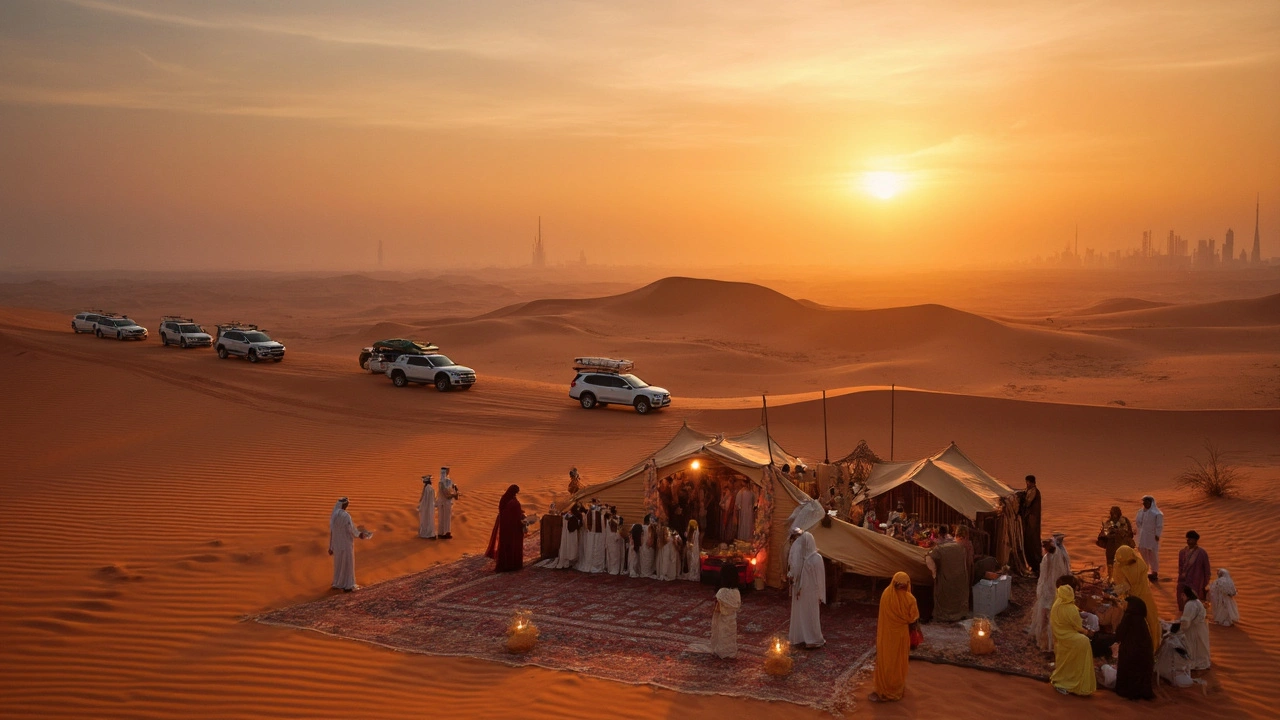
Hidden Gems and Local Favorites
Everyone hears about Burj Khalifa and Dubai Mall, but this city has a ton of spots that locals actually use for downtime. Want coffee without the endless lines on Jumeirah Beach Road? Try Nightjar in Alserkal Avenue. This place is as hip as it gets—industrial vibe, single-origin beans, always busy with Dubai artists and tech folks.
If you’re exploring Dubai's older side, give Al Fahidi historical neighborhood a look. It’s not a theme park—real families live here, and you’ll find the Arabian Tea House tucked in a shaded courtyard, serving mint lemonade and saffron-scented biryani. Go midweek for a quiet lunch and no waiting for a table.
Now, for Dubai attractions that don’t get a lot of hype: Ras Al Khor Wildlife Sanctuary. Bet you didn’t expect to see flamingos standing in pink crowds, just ten minutes from Downtown Dubai. It’s free to enter, binoculars are provided, and December through March is the season when thousands flock in for the winter.
Uniquely Dubai bonus—a car picnic in Al Qudra. Locals pile up snacks from Spinneys or Lulu, pack foldable chairs, and drive out to the cycling track by the lakes. Look for the heart-shaped Love Lake, which is perfect for a late afternoon walk or real Instagram shots (without editing, honest).
- Alserkal Avenue: Art, indie events, talk-of-the-town coffee spots.
- Arabian Tea House: Best for Emirati breakfast and traditional vibes.
- Ras Al Khor: Bird-watching, no entry fee, amazing for families.
- Al Qudra: Chill picnic spot, open air, wide desert views.
- Ripe Market (at Police Academy Park): Fresh food, handmade stuff, pop-ups on weekends.
Quick tip: try the Friday Farmer’s Market at Bay Avenue for proper farm-to-table eats and chatting with UAE growers. Most folks overlook it unless they live nearby.
Check out actual stats on these hidden gems:
| Place | Avg. Visitors/Month | Best Time to Visit |
|---|---|---|
| Alserkal Avenue | 22,000 | Evenings/Weekends |
| Ras Al Khor Sanctuary | 6,000 | Dec-Mar (Flamingo Season) |
| Al Qudra Lakes | 30,000 | Late Afternoon, Winter |
| Ripe Market | 12,000 | Friday-Saturday |
If you're after a real Dubai vibe, these are the places where you leave the crowds and explore like you live here. Skip the lines, go where folks in the know actually hang out, and you’ll see why Dubai attractions aren’t only about the record-breaking skyscrapers.

